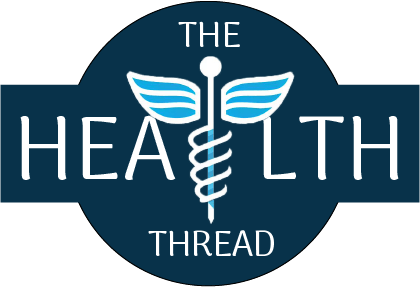The role of gut microbiota in immune function
The human gut is home to a diverse community of microorganisms known as gut microbiota, which play a crucial role in maintaining a healthy immune system. The gut microbiota interacts with the immune system in multiple ways, including by modulating immune cell development and function, influencing the production of immunoglobulins, and promoting the secretion of anti-inflammatory cytokines. In this article, we will explore the role of gut microbiota in immune function, including recent research findings and recommendations.
The gut microbiota is involved in the development and maturation of the immune system, particularly during the early years of life. In infancy, the gut microbiota plays a critical role in training the immune system to distinguish between harmful and harmless antigens (1). A lack of exposure to diverse microbiota during this critical period can lead to immune dysregulation, increasing the risk of developing allergies, autoimmune diseases, and other immune-related disorders (2).
Studies have also shown that the gut microbiota plays a key role in regulating the balance between pro-inflammatory and anti-inflammatory responses in the body. For example, certain species of gut bacteria, such as Bacteroides fragilis, have been shown to promote the production of anti-inflammatory cytokines, while other species, such as Escherichia coli, can induce pro-inflammatory responses (3). A healthy gut microbiota is thought to promote an anti-inflammatory state, reducing the risk of chronic inflammation and related diseases.
The gut microbiota also plays a role in modulating the function of immune cells, including T-cells, B-cells, and natural killer cells. For example, studies have shown that gut bacteria can stimulate the production of regulatory T-cells, which help to control the immune response and prevent autoimmune reactions (4). Other studies have found that gut bacteria can influence the function of B-cells, which produce immunoglobulins that help to protect against infections (5).
involved in the metabolism of nutrients and the production of essential In addition to its role in regulating immune function, the gut microbiota is also metabolites. For example, gut bacteria can produce short-chain fatty acids (SCFAs), which have been shown to have anti-inflammatory properties and to promote the production of regulatory T-cells (6). SCFAs are produced through the fermentation of dietary fibers, highlighting the importance of a fiber-rich diet for maintaining a healthy gut microbiota and promoting immune function.
The link between gut microbiota and immune function has been further highlighted by recent research into the role of dysbiosis, or an imbalance in the gut microbiota, in the development of immune-related disorders. Dysbiosis has been linked to a wide range of immune-related conditions, including inflammatory bowel disease (IBD), allergic diseases, and autoimmune diseases (7). For example, studies have shown that individuals with IBD have a less diverse gut microbiota and a higher abundance of pro-inflammatory bacteria (8). Similarly, in allergic diseases such as asthma and eczema, a dysbiotic gut microbiota has been observed (9).
Recent research has also explored the potential of manipulating the gut microbiota as a therapeutic approach for immune-related disorders. For example, fecal microbiota transplantation (FMT), which involves transplanting fecal matter from a healthy donor into the gut of a patient, has shown promise in the treatment of IBD and other gut-related conditions (10). Similarly, probiotics, which are live microorganisms that confer a health benefit when consumed in adequate amounts, have been shown to have immune-modulating effects and may have potential as a therapeutic approach for immune-related disorders (11).
In conclusion, the gut microbiota plays a critical role in maintaining a healthy immune system, influencing immune cell development and function, promoting the production of anti-inflammatory cytokines, and modulating the balance between pro-inflammatory and anti-inflammatory responses. Dysbiosis, or an imbalance in the gut microbiota, has been linked to a wide range of immune-related disorders, highlighting the importance of maintaining a diverse and healthy gut microbiota. Recent research has also explored the potential of manipulating the gut microbiota as a therapeutic approach for immune-related disorders, such as fecal microbiota transplantation and probiotics. Overall, further research is needed to fully understand the complex relationship between the gut microbiota and immune function, and to explore the potential of microbiome-based therapies for immune-related disorders.
REFERENCES
Chu DM, Ma J, Prince AL, Antony KM, Seferovic MD, Aagaard KM. Maturation of the infant microbiome community structure and function across multiple body sites and in relation to mode of delivery. Nat Med. 2017;23(3):314-326. doi:10.1038/nm.4272
Arrieta MC, Stiemsma LT, Dimitriu PA, et al. Early infancy microbial and metabolic alterations affect risk of childhood asthma. Sci Transl Med. 2015;7(307):307ra152. doi:10.1126/scitranslmed.aab2271
Honda K, Littman DR. The microbiota in adaptive immune homeostasis and disease. Nature. 2016;535(7610):75-84. doi:10.1038/nature18848
Round JL, Mazmanian SK. The gut microbiota shapes intestinal immune responses during health and disease. Nat Rev Immunol. 2009;9(5):313-323. doi:10.1038/nri2515
Macpherson AJ, Uhr T. Induction of protective IgA by intestinal dendritic cells carrying commensal bacteria. Science. 2004;303(5664):1662-1665. doi:10.1126/science.1091334
Arpaia N, Campbell C, Fan X, et al. Metabolites produced by commensal bacteria promote peripheral regulatory T-cell generation. Nature. 2013;504(7480):451-455. doi:10.1038/nature12726
Qin J, Li R, Raes J, et al. A human gut microbial gene catalogue established by metagenomic sequencing. Nature. 2010;464(7285):59-65. doi:10.1038/nature08821
Gevers D, Kugathasan S, Denson LA, et al. The treatment-naive microbiome in new-onset Crohn’s disease. Cell Host Microbe. 2014;15(3):382-392. doi:10.1016/j.chom.2014.02.005
Arrieta MC, Finlay BB. The commensal microbiota drives immune homeostasis. Front Immunol. 2012;3:33. doi:10.3389/fimmu.2012.00033
Borody TJ, Brandt LJ, Paramsothy S. Therapeutic faecal microbiota transplantation: current status and future developments. Curr Opin Gastroenterol. 2014;30(1):97-105. doi:10.1097/MOG.0000000000000029
Plaza-Díaz J, Ruiz-Ojeda FJ, Vilchez-Padial LM, Gil A. Evidence of the Anti-Inflammatory Effects of Probiotics and Synbiotics in Intestinal Chronic Diseases. Nutrients. 2017;9(6):555


